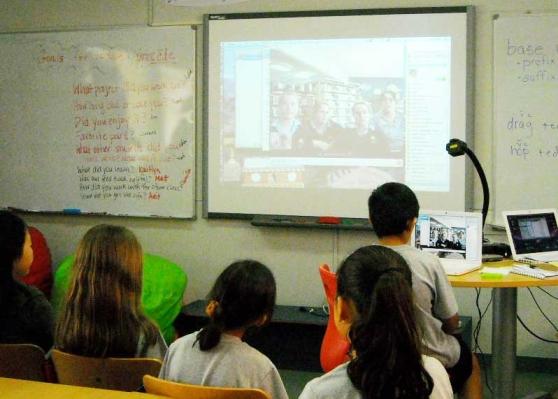
Virtual visitors can bring excitement and diverse points of view to your classroom.
Bringing visitors into your classroom to speak to students can be a powerful vehicle for learning. New voices introduce new perspectives. Students have the opportunity to see classroom ideas in practice while engaging with people from diverse arenas as they share their point of view and experience.
Over the years, I have brought a wide variety of guest speakers to my classroom, but the pandemic has made in-person visits impossible. However, now that we’ve become increasingly comfortable with remote conversations, virtual visitors can provide many of the same benefits.
Inviting visitors remotely has some upsides, too. Having taught in downtown Manhattan, I’ve had visitors who were late after getting stuck in traffic or lost on unfamiliar streets. And though New York may have the highest number of experts per capita, a remote visit allows you to hear from people around the country and the world.
So where can you find virtual visitors? Tap into your own networks. Some of the best visitors to my classroom over the years have been accomplished friends with interesting backgrounds. Remote visits don’t require the guest speaker to miss work time traveling to your school so it makes for an easier ask.
If you’re looking to expand beyond your own circle, try one of these websites:
- DreamWakers is a nonprofit that connects professionals from diverse backgrounds to grade 4–12 classrooms, prioritizing those with low-income students.
- Skype a Scientist has a mission to make science accessible and fun for students, and its service helps schools connect with its database of scientists.
- The Museum of Jewish Heritage’s Speakers Bureau is composed of Holocaust survivors, World War II veterans and their descendants who present their own experiences.
- The Pulitzer Center offers virtual visits from thousands of journalists covering diverse topics and geographic regions.
- Nepris connects educators to industry professionals, helping bring real-world relevance to curriculum and exposing students to a wide array of career paths.
If you have a famous or notable person in mind, check the person’s own web presence and social media channels, and reach out. It never hurts to ask.
Once you have a visitor booked, class prep time is essential. Provide a bio of the visitor for your students. Have them generate questions in advance. Depending on your students’ grade and skill level, you may even want to appoint some students to ask the questions or host the visit.
Reach out to the visitor beforehand to provide background on your students and curriculum. A surprising thing I’ve learned is that visitors are often nervous and have little experience speaking to children and/or teens. Give them some tips — they’ll appreciate it. In this arena, we teachers are the experts.
If you have students with disabilities or multilingual learners in your class, ask the visitor to include visuals, use larger typefaces, incorporate a home language if spoken or make other adjustments to ensure the entire class will benefit from their presentation.
During the visit, it’s important that you not take a back seat. Make yourself a presence to ensure all goes well. Give participation grades to encourage your students to be respectful and on point.
After the visit, send a thank you from you and the class, on paper or virtually.
Sandy Scragg is an instructional technology specialist with more than 20 years of experience in New York City public schools.